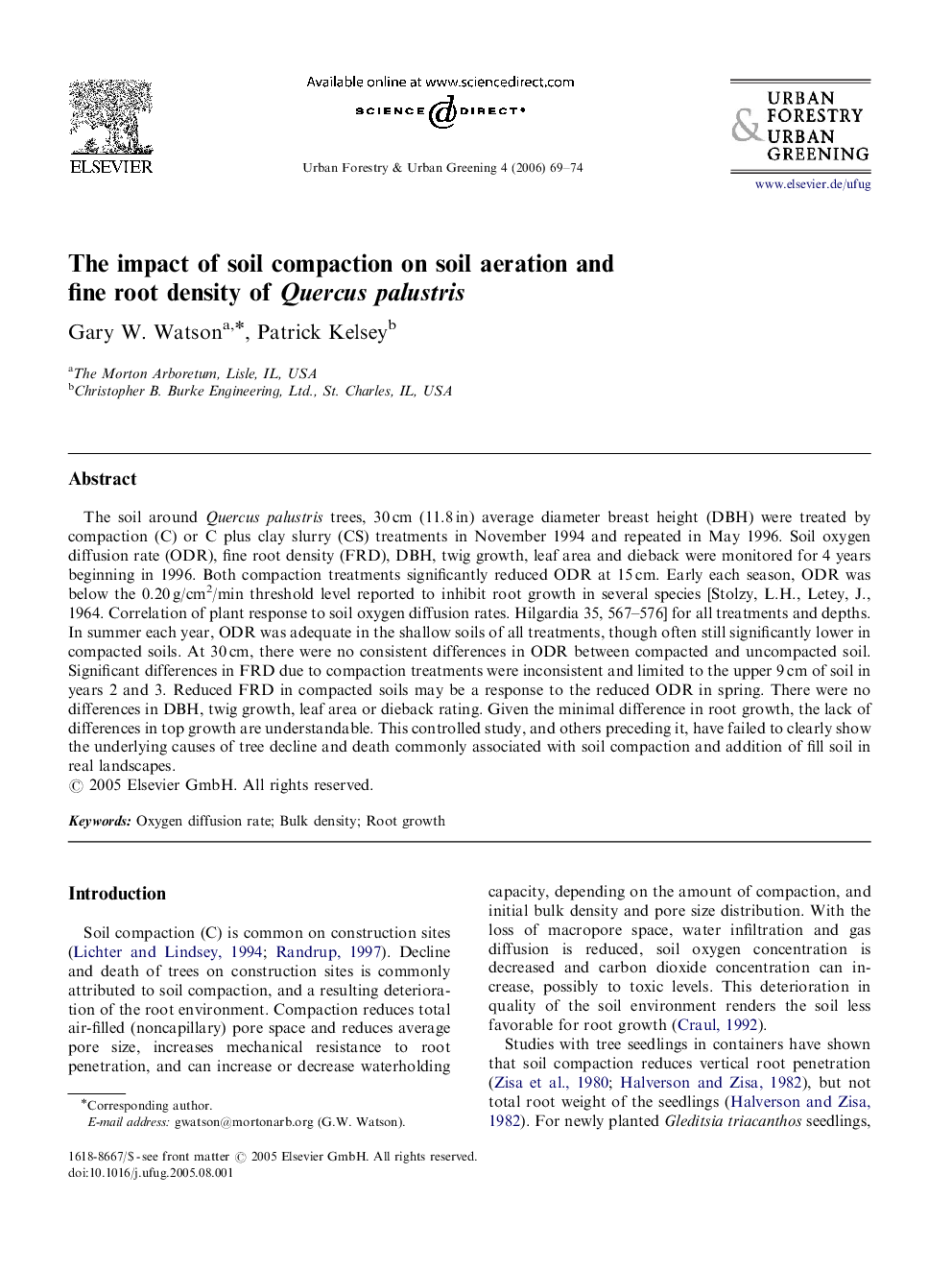| Article ID | Journal | Published Year | Pages | File Type |
|---|---|---|---|---|
| 94267 | Urban Forestry & Urban Greening | 2006 | 6 Pages |
The soil around Quercus palustris trees, 30 cm (11.8 in) average diameter breast height (DBH) were treated by compaction (C) or C plus clay slurry (CS) treatments in November 1994 and repeated in May 1996. Soil oxygen diffusion rate (ODR), fine root density (FRD), DBH, twig growth, leaf area and dieback were monitored for 4 years beginning in 1996. Both compaction treatments significantly reduced ODR at 15 cm. Early each season, ODR was below the 0.20 g/cm2/min threshold level reported to inhibit root growth in several species [Stolzy, L.H., Letey, J., 1964. Correlation of plant response to soil oxygen diffusion rates. Hilgardia 35, 567–576] for all treatments and depths. In summer each year, ODR was adequate in the shallow soils of all treatments, though often still significantly lower in compacted soils. At 30 cm, there were no consistent differences in ODR between compacted and uncompacted soil. Significant differences in FRD due to compaction treatments were inconsistent and limited to the upper 9 cm of soil in years 2 and 3. Reduced FRD in compacted soils may be a response to the reduced ODR in spring. There were no differences in DBH, twig growth, leaf area or dieback rating. Given the minimal difference in root growth, the lack of differences in top growth are understandable. This controlled study, and others preceding it, have failed to clearly show the underlying causes of tree decline and death commonly associated with soil compaction and addition of fill soil in real landscapes.
